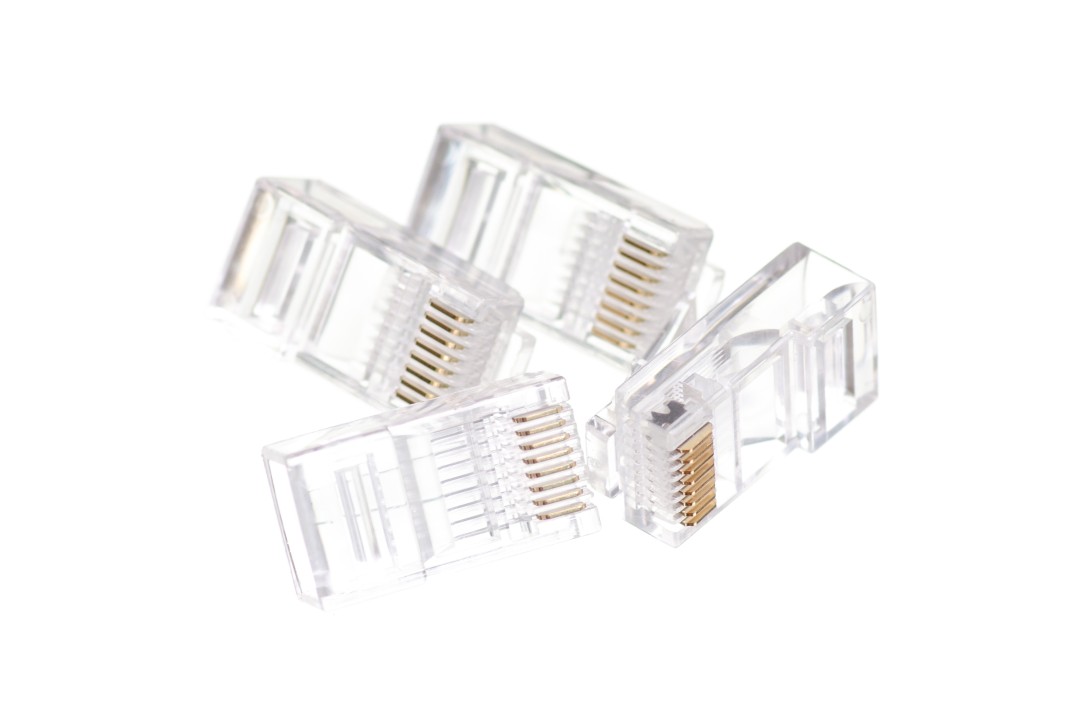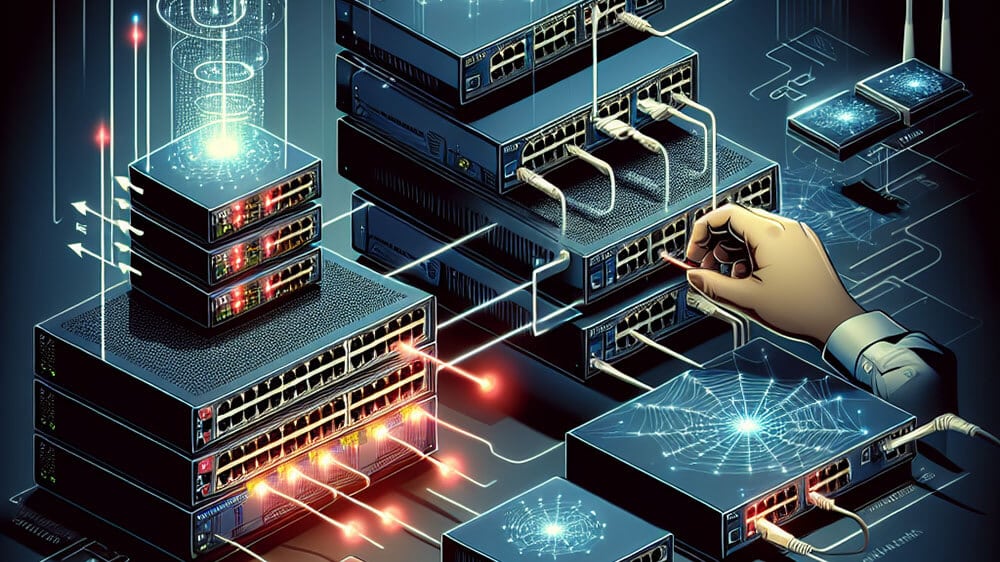Introduction:
In the world of network cabling, RJ45Jacks are a key component that connects cables to devices. Whether it's a home network, corporate office or data center, choosing the right RJ45jack is critical. However, faced with the two common jack types Cat5e and Cat6, many people may be confused: what is the difference between them? How should you choose? This article mainly compares cat5e and cat6 from three aspects: performance, cost and usage scenario.
1.cat5e and cat6 rj45jack performance differences
These two are used to connect the Ethernet cable interface, there are some differences between them, the following is the performance difference:
1.1bandwidth
Cat5e supports bandwidth up to 100 MHz. cat6 supports bandwidth of up to 250 MHz, and some Cat6 versions can reach 500 MHz. Overall, the bandwidth of cat6 is higher.
1.2Transmission speed
The Cat5e supports up to 1 Gbps (Gigabit Ethernet) and can achieve this speed over short distances, such as 55 meters. The transmission speed is slow and the transmission distance is short. Cat6 also supports 1 Gbps, but performs better at distances above 55 meters, and some Cat6 cables can support 10 Gbps (10 Gigabit Ethernet) over short distances. The transmission speed is better than cat5e rj45jacks, and in the same case, the transmission speed is fast, you can choose cat6.
1.3 Anti-interference capability
The anti-jamming capability of the two RJ45Jacks will differ. Cat5e has a certain anti-interference ability, but not as good as Cat6. The Cat6 rj45jacks feature a more rigorous shielding design for greater resistance to crosstalk and external interference, making it suitable for high-density cabling environments.

2.Cost variance
The difference in cost between Cat5e rj45jacks and Cat6 rj45jacks depends on factors such as materials, manufacturing processes, performance requirements, and market supply and demand.
2.1Material cost
Cat5e uses ordinary copper wire and simple insulation. Its lower stranding density, less shielding requirements, weak anti-interference ability, so cat5e rj45jacks material cost is low, suitable for mass production. Cat6 uses higher quality copper wire with higher conductor purity, it also has a higher stranding density to reduce crosstalk and signal attenuation, and may require additional shielding (such as foil shielding or braided shielding) to enhance anti-interference capability. In general, cat6 requires more materials, and the purity and density requirements of materials are also high, so the material cost is higher than that of cat5e.
2.2Manufacturing process
The production process of Cat5e is relatively simple and the technical requirements are low. With low production line costs, this rj45jacks is ideal for rapid mass production. The Cat6 production process is more complex and requires higher stranding accuracy and shielding technology. The staff on the production line is very demanding, and the process technical standard is higher than that of cat5e, so the production line cost is higher and the production speed may be slower.
2.3Performance requirement
Cat5e is designed to meet 1 Gbps transmission requirements with low performance requirements. Low cost, suitable for common network environment. Cat6 is designed to support higher bandwidth (250 MHz or higher) and faster transfer speeds (10 Gbps short distance). Higher technical standards and more rigorous testing are required, increasing costs. Suitable for high-demand network environments.
2.4Market price
The Cat5e market is less expensive, and 100 meters of Cat5e cable can cost between $20- $50 (depending on the brand and quality). Cat6 is generally 30-50% more expensive than Cat5e, and 100 meters of Cat6 cable can cost between $30 and $70 (depending on the brand and quality). The price of these two rj45jacks is also different for the same length.
Overall, the cost of cat6 rj45jack is higher than that of cat5e rj45jack, not only in the materials used, but also in the manufacturing process, production line and so on.

3.Application scenario
3.1cat5e Application scenario
|
|
Home network |
Small office |
Old device compatibility |
Temporary network deployment |
|
Scene description |
Ordinary home networks usually have low bandwidth requirements and are mainly used for Internet access, video streaming, online games, etc. |
Small offices typically have less equipment and lower network traffic |
Some older devices (such as older routers, switches) may only support lower transfer speeds. |
Temporary events or short-term projects may require rapid networking. |
|
advantage |
1. Low cost, suitable for family budget. 2. Support 1 Gbps transmission speed, enough to meet the needs of most families. 3.Simple installation and easy maintenance. |
1. Cost-effective, suitable for small businesses with limited budgets. 2.Support Gigabit Ethernet to meet daily office needs (such as file transfer, video conferencing, etc.) |
1.Cat5e has good compatibility and can be used with most old equipment. 2. No need to upgrade existing equipment, saving costs. |
1. Low cost, suitable for short-term use. 2.Easy installation and fast deployment. |
3.2cat6 Application scenario
|
|
Enterprise network |
Data center |
Multimedia and video production |
Smart home |
Educational institution |
Medical facility |
|
Scene description |
Enterprise networks usually have dense equipment and large data transmission volume, which requires high network performance. |
Data centers require high-bandwidth, low-latency network environments to support the rapid transfer of large amounts of data. |
Scenarios such as video production and multimedia editing require the transmission of large amounts of high-definition video and audio data. |
Smart home systems require a stable network connection to support a variety of smart devices (such as cameras, smart speakers, security systems, etc.). |
Schools, training institutions, etc. need to support a large number of users online at the same time (e.g. online courses, examination systems, etc.). |
Hospitals, clinics, etc., need to transfer a large amount of medical data (such as image files, medical records, etc.). |
|
advantage |
1. Support higher bandwidth (250 MHz) and faster transmission speed (10 Gbps short distance) 2. Strong anti-interference ability, suitable for high-density wiring environment. |
1. Support 10 Gbps transmission speed, suitable for high-performance computing and storage requirements. 2. Good shielding performance, reduce signal interference, ensure the stability of data transmission. |
1.High bandwidth supports fast transmission of large files. 2.Low latency ensures smooth real-time editing and playback. |
1. High bandwidth supports simultaneous connection of multiple devices. 2. Strong anti-interference ability to ensure stable operation of equipment. |
1.High bandwidth supports simultaneous access by multiple users. 2.Good compatibility in the future, able to support the upgrade of educational technology. |
1. High bandwidth supports fast transmission of large files. 2. Strong anti-interference ability to ensure the reliability of data transmission. |
Cat5e and Cat6 RJ45jack each have their own advantages and application scenarios. If you are building a home or small office network with a limited budget and low network performance requirements, Cat5ejacks is an affordable option. However, if you need higher bandwidth, greater anti-jamming capability, or plan to upgrade to a higher speed network (such as 10 Gbps) in the future, then Cat6jacks is undoubtedly a better choice.
Conclusion:
No matter which jacks you choose, make sure it matches the cable type and is installed strictly to the standard to maximize network performance. Hopefully this article will help you better understand the difference between Cat5e and Cat6 RJ45jacks, and provide a valuable reference for your network cabling project!
If you want to know more about the different models of rj45jacks, you can contact GLFNET, we will provide detailed answers!